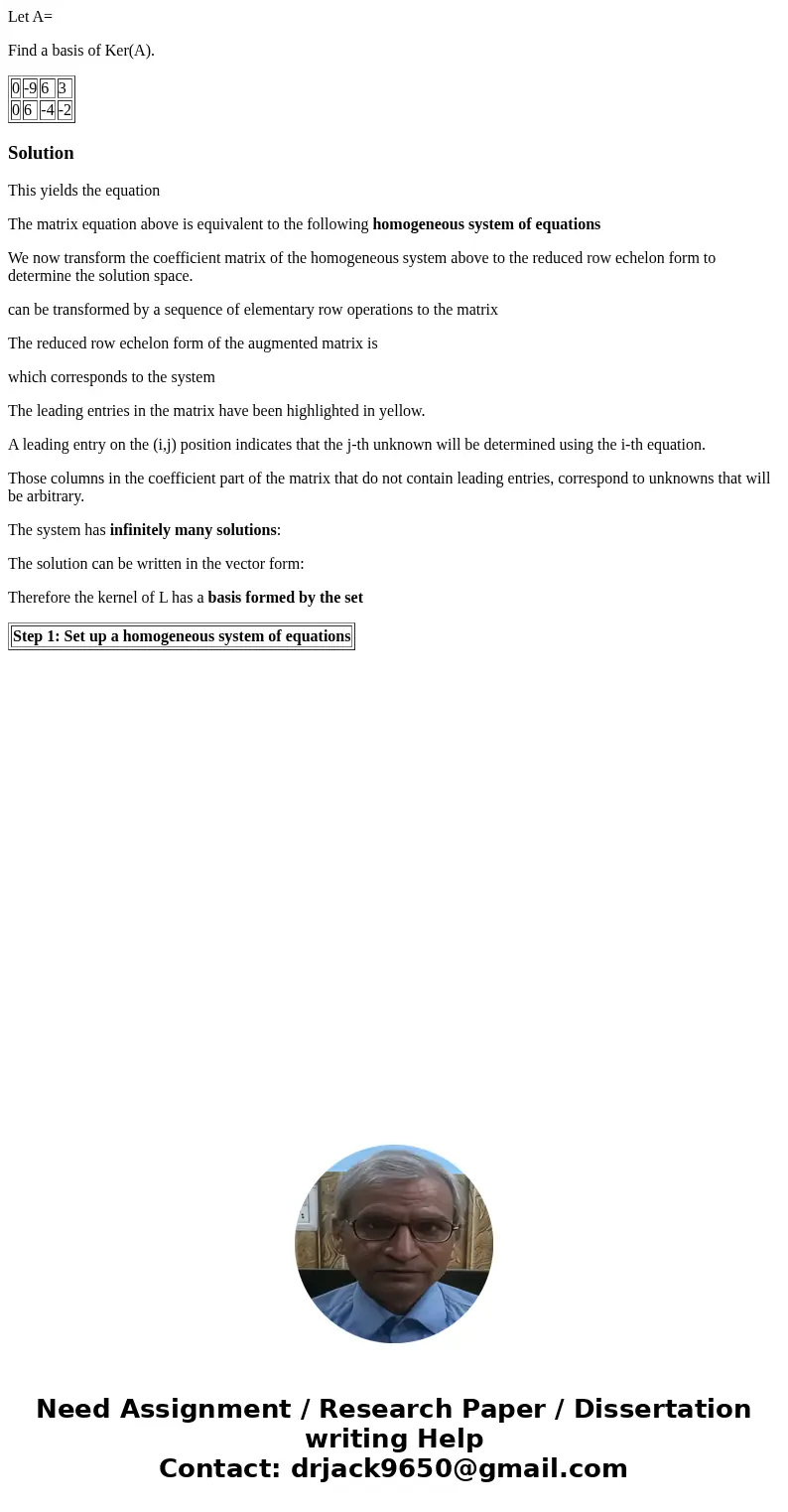Let A Find a basis of KerA 0 9 6 3 0 6 4 2 SolutionThis yiel
Let A=
Find a basis of Ker(A).
| 0 | -9 | 6 | 3 |
| 0 | 6 | -4 | -2 |
Solution
This yields the equation
The matrix equation above is equivalent to the following homogeneous system of equations
We now transform the coefficient matrix of the homogeneous system above to the reduced row echelon form to determine the solution space.
can be transformed by a sequence of elementary row operations to the matrix
The reduced row echelon form of the augmented matrix is
which corresponds to the system
The leading entries in the matrix have been highlighted in yellow.
A leading entry on the (i,j) position indicates that the j-th unknown will be determined using the i-th equation.
Those columns in the coefficient part of the matrix that do not contain leading entries, correspond to unknowns that will be arbitrary.
The system has infinitely many solutions:
The solution can be written in the vector form:
Therefore the kernel of L has a basis formed by the set
| Step 1: Set up a homogeneous system of equations |

 Homework Sourse
Homework Sourse